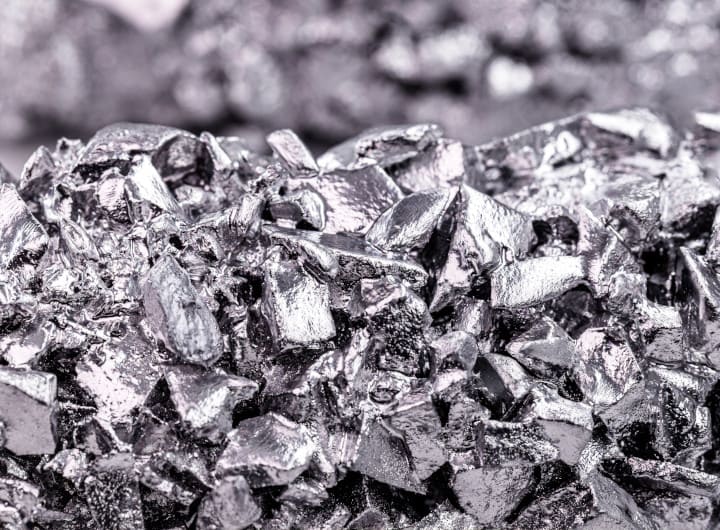Tin is a chemical element with atomic number 50, symbol Sn (from the Latin stannum). Rare in its native state, tin is mainly extracted from a mineral called cassiterite where it is found in the form of SnO2 oxide. More than 80% of its production comes from a region stretching from central China through Thailand and Indonesia.
In 2017, refined tin production amounted to 364,300 tonnes, of which 31% was recycled tin. About 47% of tin is used as a base material in various types of soldering and welding. Tin is also used to create tinplate, a mild or extra mild steel sheet (carbon content less than 0.08%), less than 0.5 mm thick and coated with tin on both sides.
Do you have a large amount of tin scrap and want to recycle it? Find out where to sell your tin by weight.
Why Sell Your Scrap Tin?
Industries that use tin-based alloys produce a large amount of waste. Most of this waste comes from soldering and welding residues, defective engine parts or industrial machinery, tin-based rolled scrap and oxides collected from molten metal baths.
Mineral resources are a finite stock that humanity is depleting at an increasing rate. According to the International Tin Association, if the current rate of tin consumption continues, the resource will be exhausted within 50 years. Recycling and reclaiming tin is therefore essential. This solution has many advantages, such as:
- preventing environmental damage (soil and atmospheric pollution and deforestation) ;
- saving resources (some of which are becoming scarce) and the energy needed to extract and process the ore;
- recovering the metal by recycling it and thus producing new metals more quickly which will rapidly find their way back onto the market.
If you have scrap tin or tin alloys, you can recycle them.
Who Collects Tin?
If you want to sell tin by weight, you can contact a metal recycling company such as metaconcept. We take care of the transport of the waste. We take care of everything, including:
- The provision of suitable containers if you do not have containers for storing your tin waste;
- On-site collection and transport of your waste by a professional in the transport of hazardous and non-hazardous waste;
- Sorting, recycling and recovery.
What is the Selling Price of Tin?
In addition to zinc, lead, nickel, copper and aluminium, tin is one of the metals listed on the stock exchange. It is mainly traded on the London Metal Exchange (LME), which is the world’s largest non-ferrous metals market, accounting for 80% of global trade.
Apart from a global tin crisis in 1985, the price of tin had never exceeded $22,000 per tonne until 2016. In 2020, the price fell sharply due to the COVID-19 pandemic. The years 2021 and 2022 were marked by a rise in the price of tin. Indeed, its price reached USD 41,000 on 25 November 2021. This represents a 95% increase between January and November 2021. Despite a sharp decline in December 2021, the situation stagnated for several months until it reached a new high of $48,660 per tonne on 7 March 2022.
Tin is primarily traded in a tight market, with the supply side dominated by China. However, in its fight against the coronavirus, Beijing has repeatedly closed its border with Myanmar, its main supplier of tin ore. This constraint has weighed on supply and therefore on the price. Secondly, the war in Ukraine is also having an impact on metal prices. Supply is constrained by international hazards and the disorganisation of supply chains.
Finally, whether for infrastructure or for the energy transition, demand for metals seems destined to increase. Some analysts speak of a metal “supercycle”. Indeed, if the world shifts from carbon-intensive fuels to clean energy and low-carbon fuels, there will be even greater demand for industrial metals.
Do you have any questions? If so, do not hesitate to contact the recycling team.




